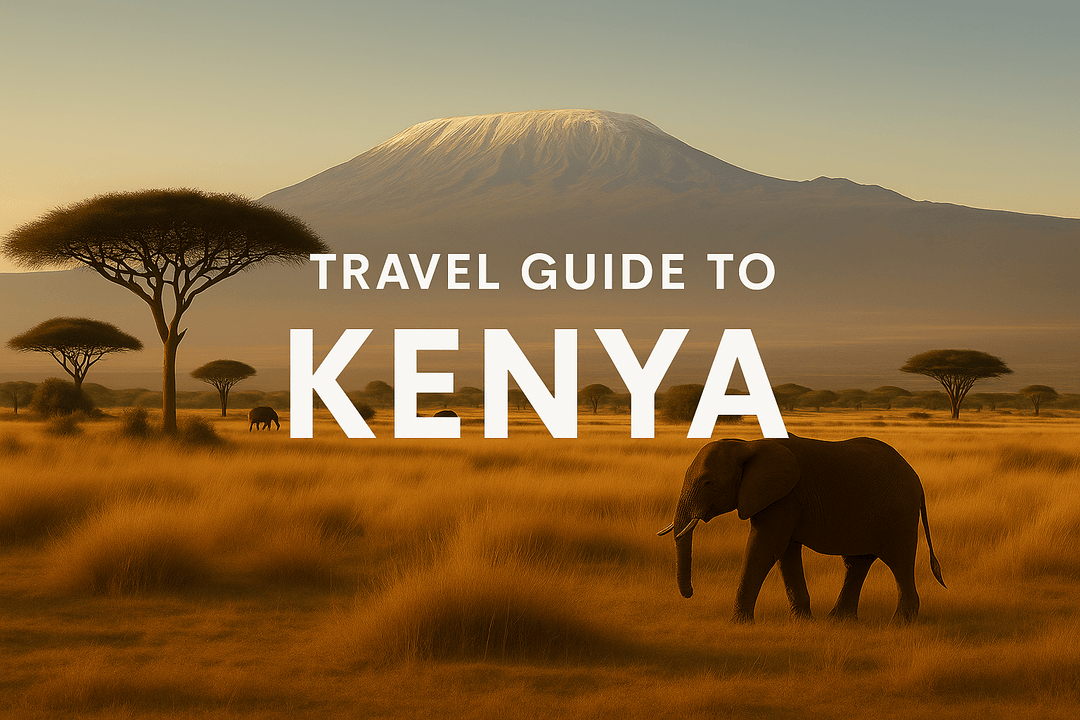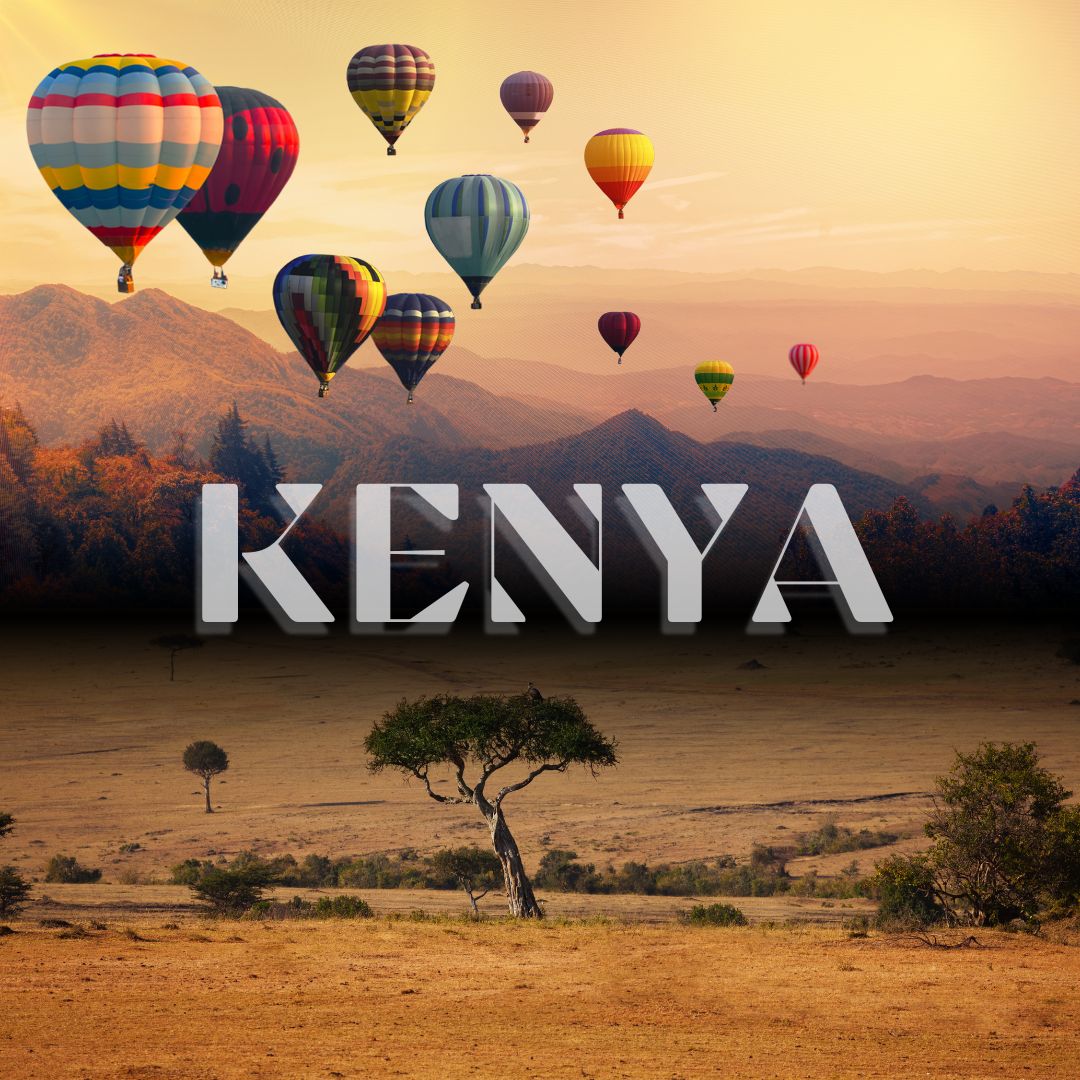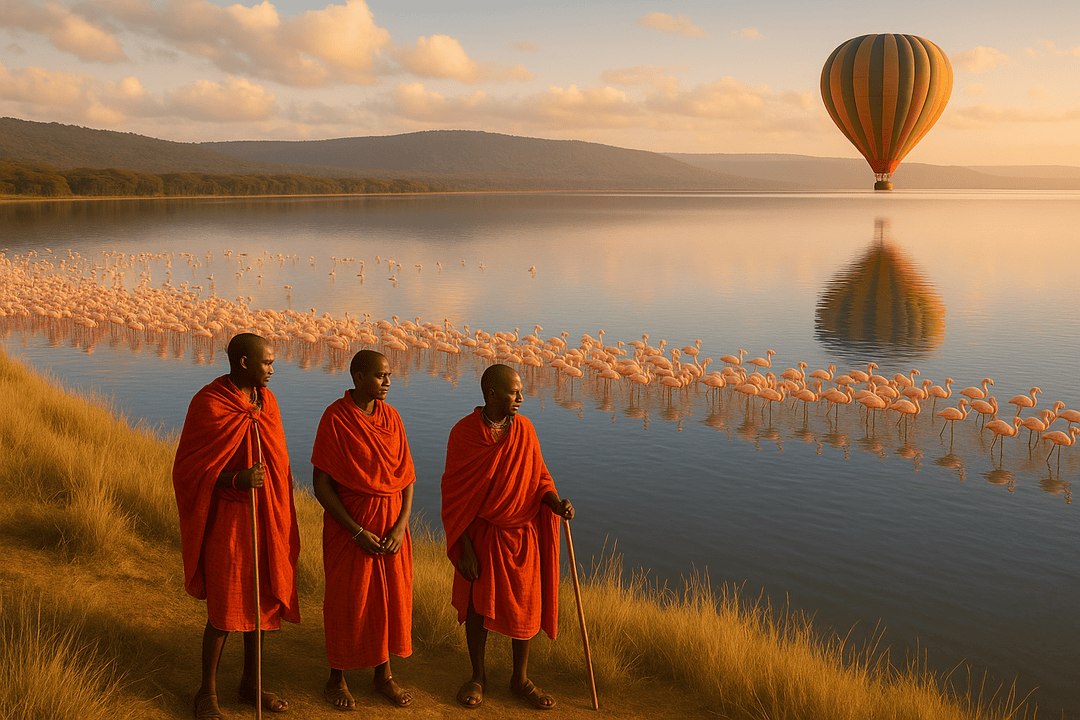The Ultimate Travel Guide to Kenya: Safari Adventures, Cultural Experiences & Essential Tips
Hey there, adventure seeker! Looking for the trip of a lifetime? This Kenya travel guide is your ticket to exploring one of Africa’s most spectacular destinations. From witnessing the Great Migration to lounging on pristine beaches, Kenya offers experiences that will leave you breathless (in a good way)!
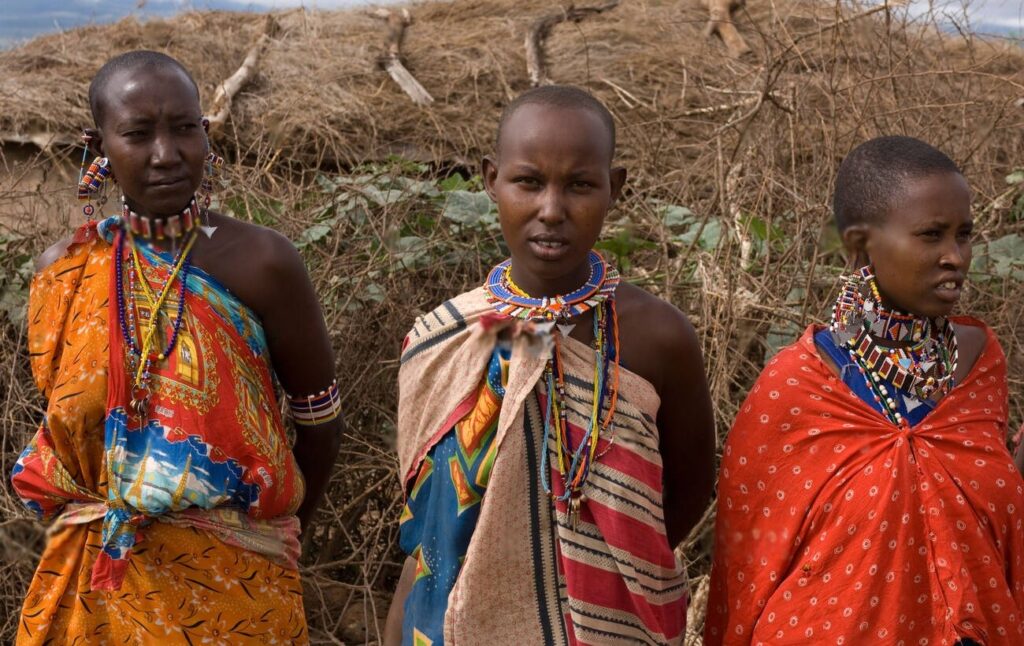
Whether you’re a wildlife enthusiast, cultural explorer, or just someone who needs a break from the ordinary, Kenya has got you covered. Before we dive into the nitty-gritty details, let’s get this straight knowing things to know before going to Kenya will make your trip ten times more awesome!
So grab your favorite beverage, get comfy, and let’s embark on this virtual journey through magical Kenya together!
Best Time to Visit Kenya
Timing is everything when planning your Kenyan adventure! The best time to visit Kenya largely depends on what you want to experience. Kenya has two main seasons that shape tourism patterns:
Dry Seasons (Prime Safari Time)
- January to March: Less rainfall, clear skies, and wildlife congregating around water sources make this an excellent time for safaris. The landscapes might be less lush, but the animal spotting is top-notch!
- June to October: This is peak tourist season and for good reason! If witnessing the Great Migration is on your bucket list (and it should be), aim for July to September when millions of wildebeest cross from Tanzania’s Serengeti to Kenya’s Masai Mara. Just remember this Kenya travel guide tip comes with a warning: book accommodations well in advance during these months!
Wet Seasons (Budget-Friendly Options)
- April to May (Long rains): Expect daily downpours, but also lush landscapes, fewer tourists, and lower prices. Some remote roads may become impassable, but major parks remain open.
- November to December (Short rains): Brief afternoon showers, green scenery, and newborn wildlife make this a hidden gem period to visit.
When considering the best time to visit Kenya for birdwatching, the wet seasons transform Kenya into a bird paradise with migratory species arriving in full force. Photography enthusiasts will love the dramatic skies and verdant backgrounds!
Climate varies by region too! Coastal areas like Mombasa stay warm and humid year-round (perfect for that beach extension), while Nairobi and highlands offer cooler temperatures. Mount Kenya can get downright chilly, so pack accordingly if you’re heading to higher elevations.
Want an insider tip from this travel guide to Kenya? Consider visiting during the “shoulder seasons” the weeks just before or after peak periods. You’ll enjoy good weather conditions with fewer crowds and potentially better deals.
Remember, there’s no single “best” time, the best time to visit Kenya is whenever you can make it happen! Each season offers its own unique magic and memorable experiences.
Top Tourist Attractions
Kenya is packed with incredible attractions that’ll make your Instagram followers green with envy! This Kenya travel guide section highlights the must-see spots that should be on every traveler’s itinerary:
Masai Mara National Reserve
The crown jewel of Kenya’s tourism scene, the Masai Mara offers the unimaginable safari experience. Known worldwide for the annual Great Migration, this vast savannah is home to the “Big Five” (lion, leopard, elephant, buffalo, and rhino) and countless other species. The golden grasslands dotted with acacia trees create that classic African landscape you’ve seen in documentaries. Hot air balloon safaris over the Mara at sunrise? Absolutely life-changing!
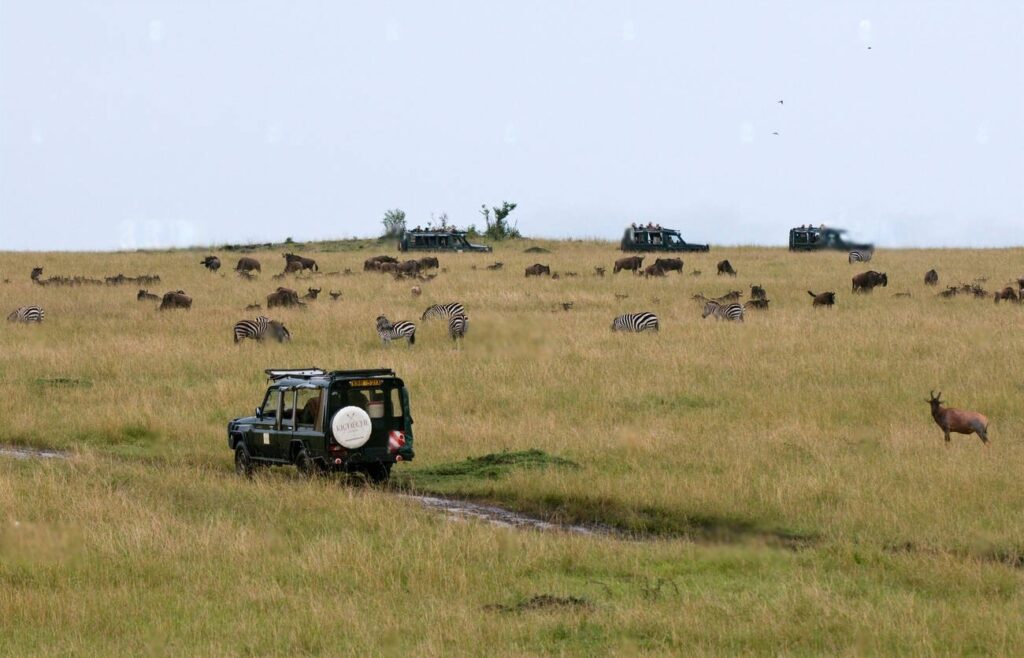
Amboseli National Park
Want to photograph elephants with snow-capped Mount Kilimanjaro as a backdrop? Amboseli is your spot! Despite being in Kenya, you get stunning views of Tanzania’s famous mountain. The park’s relatively small size means wildlife concentration is high, making it a photographer’s dream destination.
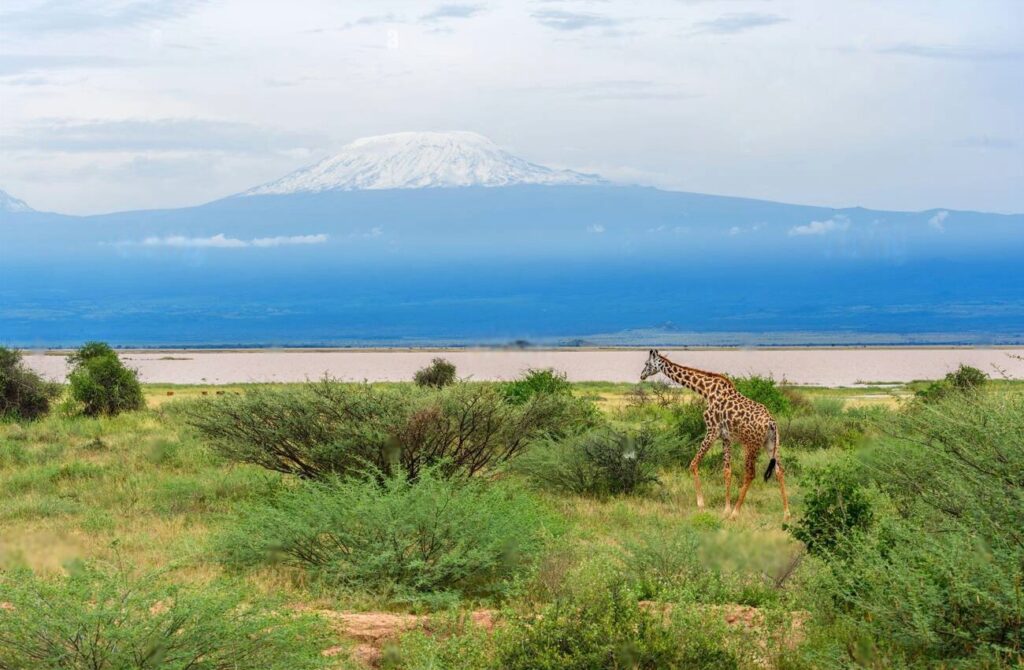
Lake Nakuru National Park
Famous for its flamboyance of flamingos (yes, that’s really what a group of flamingos is called!), Lake Nakuru is a bird lover’s paradise. The pink hue that the birds give the lake’s shores is utterly surreal. Beyond the flamingos, the park is a sanctuary for endangered rhinos and offers beautiful landscapes including the Makalia waterfall.
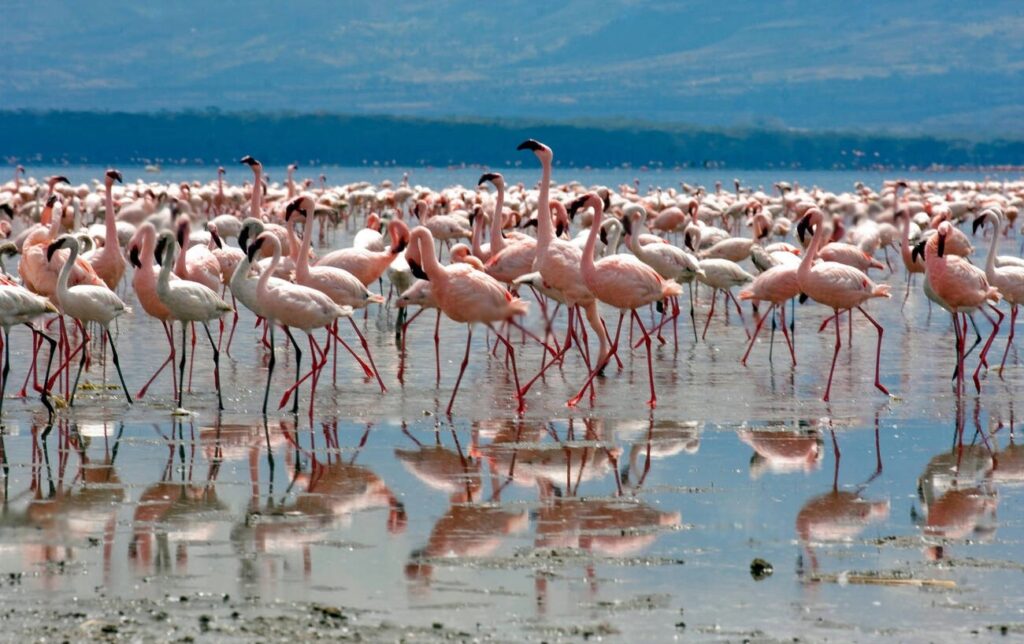
Lamu Island
Step back in time on Lamu, Kenya’s oldest continuously inhabited settlement. With no cars allowed, narrow winding streets, traditional Swahili architecture, and donkeys as the main transportation, Lamu offers authentic cultural immersion. The pace of life here reminds you that sometimes, slower is better.
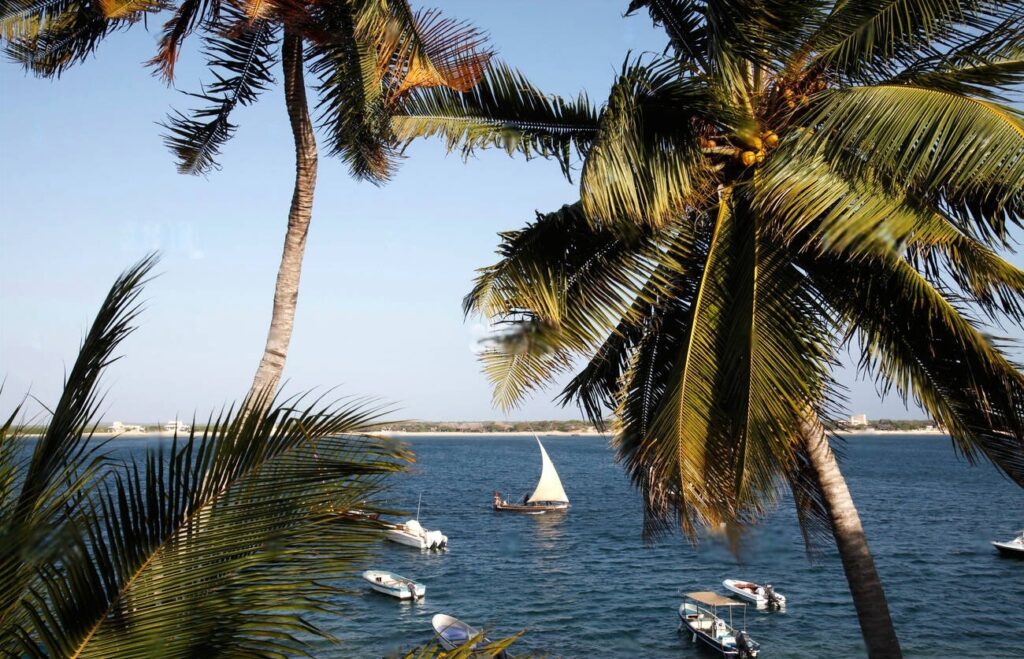
Nairobi National Park
How many capital cities can boast a genuine wildlife park just 7km from the city center? This unique protected area allows you to photograph giraffes with skyscrapers in the background! It’s a perfect introduction to Kenyan wildlife if you’re short on time or a great first stop on your longer journey.
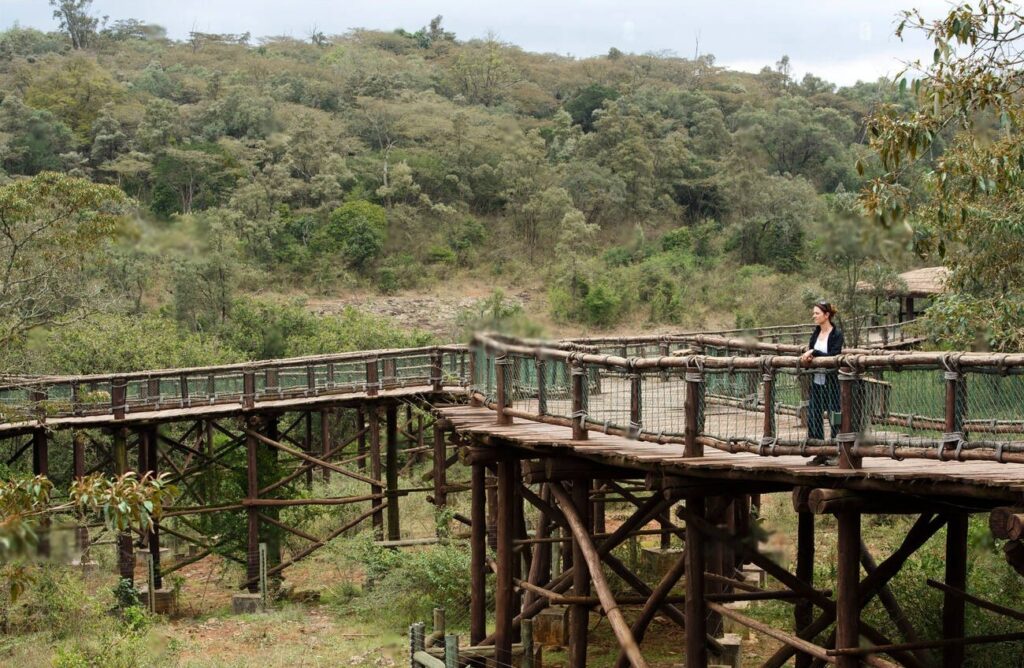
Mount Kenya
Africa’s second-highest peak offers challenging climbing routes for adventurous travelers. Even if you’re not summiting, the surrounding Mount Kenya National Park provides breathtaking hiking opportunities through diverse ecological zones, from bamboo forests to alpine moorlands.

Diani Beach
When you’ve had your fill of wildlife, Kenya’s coast delivers with pristine white sand beaches. Diani Beach, with its powder-soft sand, swaying palms, and turquoise Indian Ocean waters, is regularly voted among Africa’s best beaches. Try kitesurfing, scuba diving, or simply perfect the art of beachside relaxation.
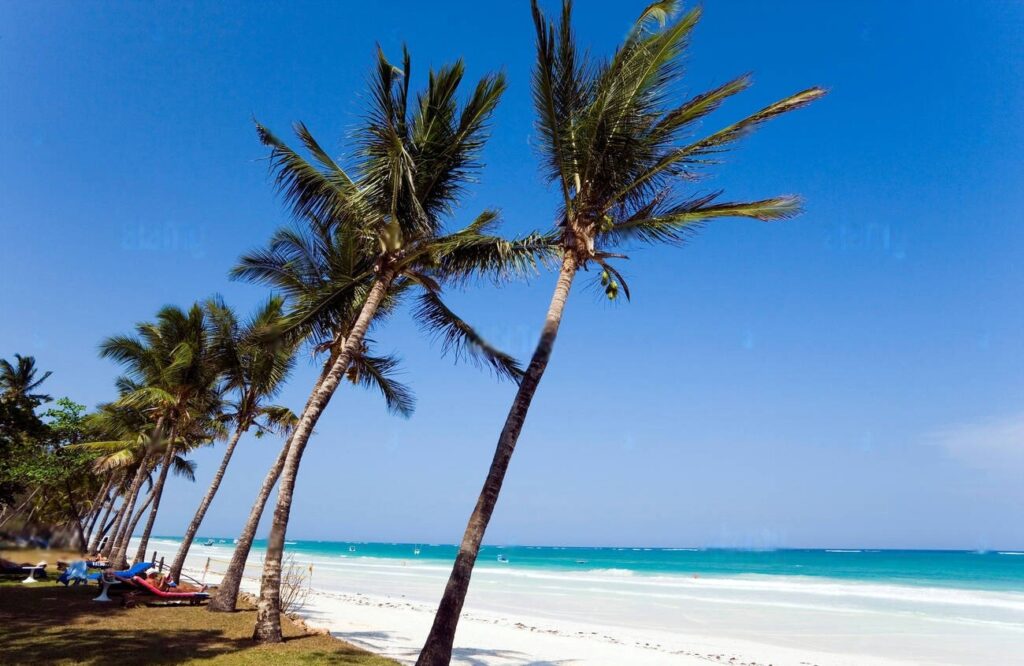
Hell’s Gate National Park
Channel your inner adventurer at this unique park where you can cycle or walk among wildlife! The dramatic gorges, towering cliffs, and geothermal features inspired landscapes in “The Lion King.” The natural hot springs and geysers remind you of the powerful geological forces that shaped the Great Rift Valley.
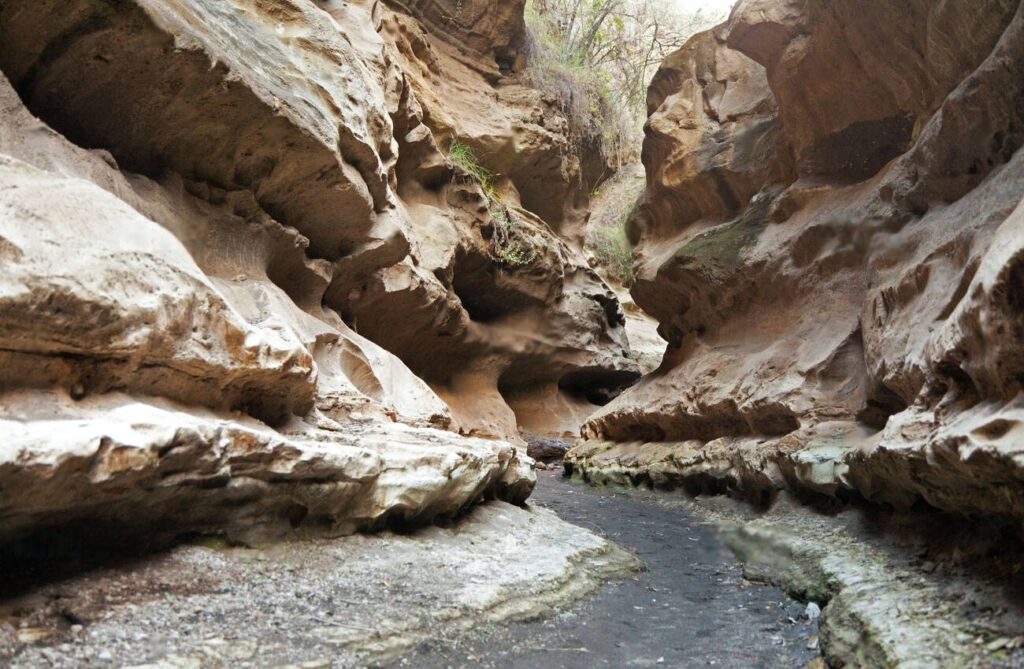
David Sheldrick Wildlife Trust
Located near Nairobi, this elephant orphanage does incredible conservation work. Visiting during the daily viewing hours allows you to watch baby elephants being fed and playing. Want to make a difference during your travels? Consider “adopting” an elephant to support their rehabilitation!
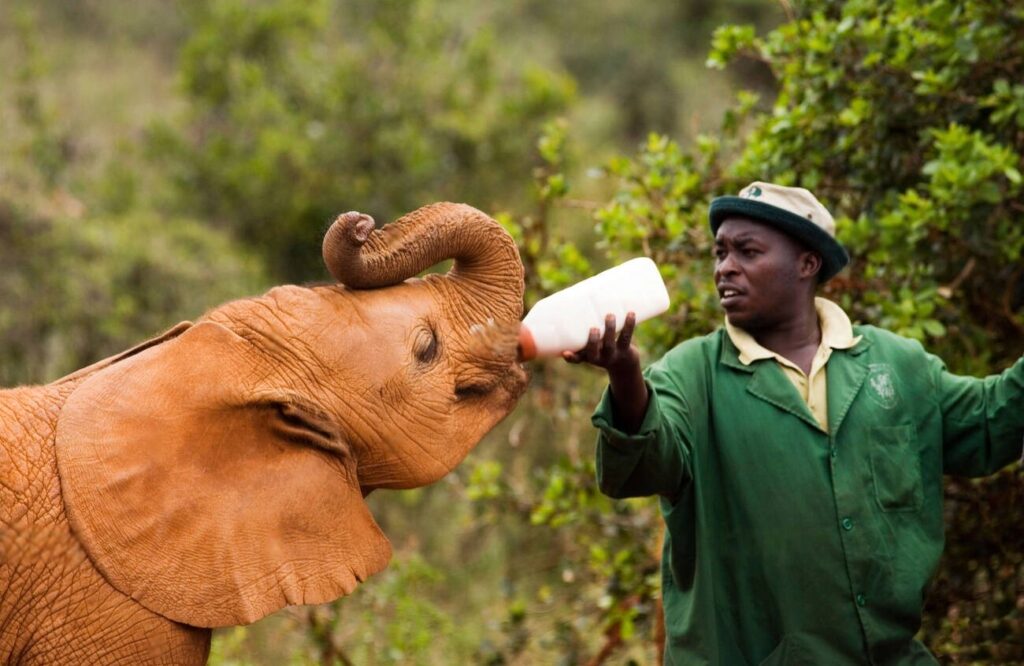
One of the essential things to know before going to Kenya is that many attractions have conservation fees separate from park entries. Budget accordingly and remember that these fees help protect these incredible places for future generations. This travel guide to Kenya recommends planning your itinerary to group nearby attractions together to maximize your time and minimize transit days.
Safari Destinations in Kenya
Going on safari is the ultimate Kenya experience! This Kenya travel guide section breaks down the top safari destinations so you can find your perfect wildlife adventure:
Masai Mara National Reserve
The undisputed safari champion of Kenya, the Mara is what safari dreams are made of. Beyond the famous wildebeest migration, the year-round game viewing is exceptional. The open grasslands make wildlife spotting relatively easy, even for first-timers. Stay in a tented camp to fall asleep to the sounds of the wild lions roaring in the distance is nature’s perfect lullaby!

Safari Tip: Book a conservancy stay adjacent to the main reserve for more exclusive game drives with fewer vehicles.
Amboseli National Park
Known for its large elephant herds and spectacular views of Mount Kilimanjaro, Amboseli offers intimate wildlife encounters in a compact area. The park’s relatively flat, open terrain makes it ideal for photography. The elephants here have been studied for decades and are some of the most researched pachyderms on the planet!
Safari Tip: Visit in early morning when the mountain is most likely to be visible before clouds roll in.
Tsavo East & West National Parks
Combined, these parks form one of Africa’s largest wildlife areas! Tsavo East is known for its red elephants (they dust bathe in the distinctive red soil) and the Yatta Plateau, the world’s longest lava flow. Tsavo West features more varied landscapes including volcanic cones, the crystal-clear Mzima Springs where you can watch hippos underwater, and black rhino sanctuaries.
Safari Tip: Split your time between both parks to appreciate their distinct ecosystems.
Samburu National Reserve
For something different, head north to Samburu. This arid landscape is home to unique species collectively known as the “Samburu Special Five”: Grevy’s zebra, reticulated giraffe, Somali ostrich, gerenuk (the extraordinary “giraffe-necked” antelope), and beisa oryx. The reserve also offers cultural interactions with the Samburu people, cousins to the Maasai.

Safari Tip: Bring extra camera batteries, the unique wildlife will have you snapping non-stop!
Lake Nakuru National Park
Beyond the famous flamingos, Nakuru is a sanctuary for both black and white rhinos, making it one of the best places in Kenya to see these endangered species. Leopard sightings are also relatively common here keep your eyes on the acacia trees!
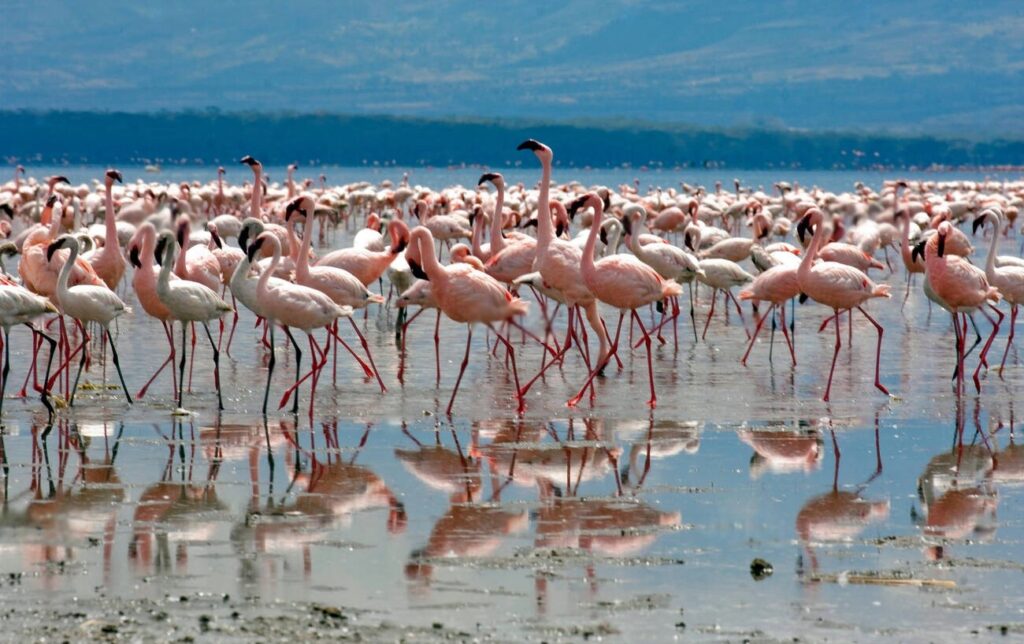
Safari Tip: Include a visit to the viewpoint for spectacular panoramas of the lake and surrounding landscapes.
Meru National Park
Made famous by Joy Adamson’s “Born Free,” Meru remains relatively uncrowded despite its incredible diversity. With 13 rivers flowing through it, the park stays green even during dry seasons. The varied habitats support everything from elephants to rare antelope species.
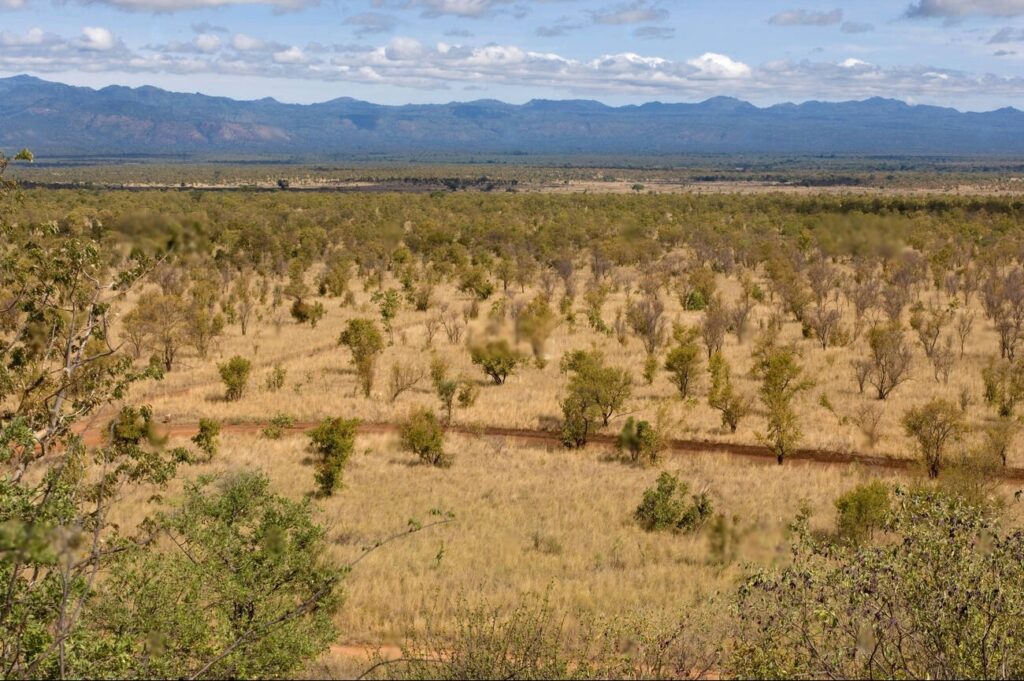
Safari Tip: Combine with Samburu for a comprehensive northern Kenya safari circuit.
Ol Pejeta Conservancy
This private conservancy offers incredible conservation success stories. It’s home to the last two northern white rhinos on the planet and the largest sanctuary for black rhinos in East Africa. Beyond traditional game drives, you can visit the chimpanzee sanctuary or enjoy night drives (not permitted in national parks).

Safari Tip: Book the behind-the-scenes conservation experience to learn about anti-poaching efforts.
The Matthews Range
For the adventurous safari-goer, the remote Matthews Range offers walking safaris with local Samburu guides. This is a chance to experience wildlife on foot while learning traditional tracking skills and medicinal plant knowledge.
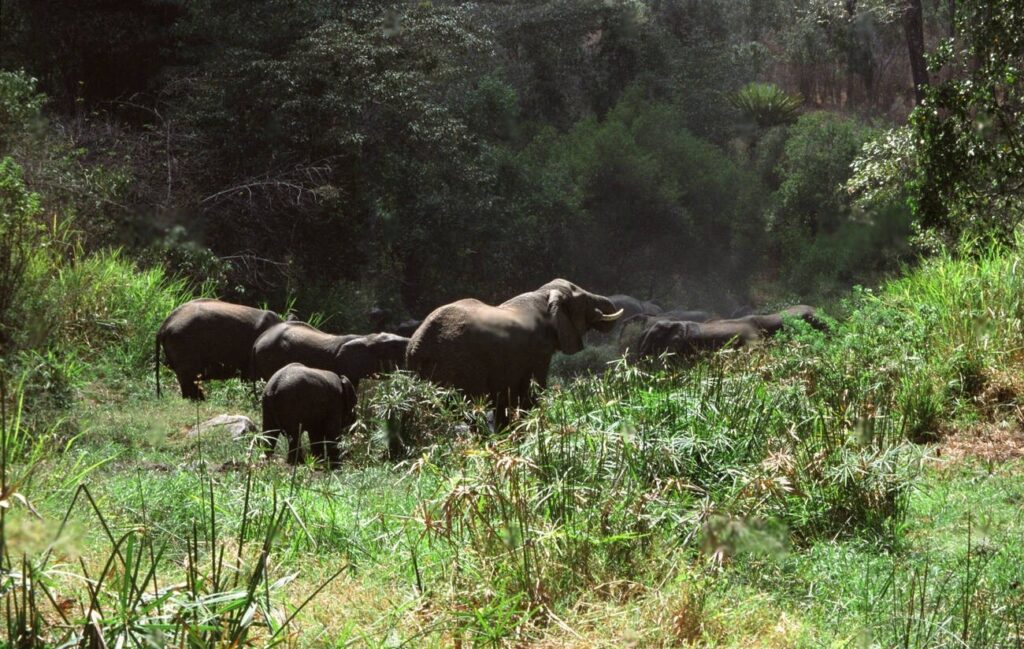
Safari Tip: Pack light but bring good hiking boots if you’re planning walking safaris here.
One of the things to know before going to Kenya for safaris is that each park has its own personality and specialty species. This travel guide to Kenya recommends mixing famous parks with lesser-known gems for a more comprehensive safari experience. Many first-time visitors focus only on the Masai Mara, but combining several different ecosystems will showcase Kenya’s incredible biodiversity and give you more varied wildlife sightings!
Local Culture and Traditions
Kenya’s incredible cultural tapestry is as diverse as its landscapes! This Kenya travel guide section introduces you to the rich cultural heritage that makes Kenya so special beyond its wildlife:
Kenyan Tribes and Communities
Kenya is home to over 40 distinct ethnic groups, each with their own unique languages, customs, and traditions. Here are some of the most prominent communities you might encounter during your Kenya travel adventure:
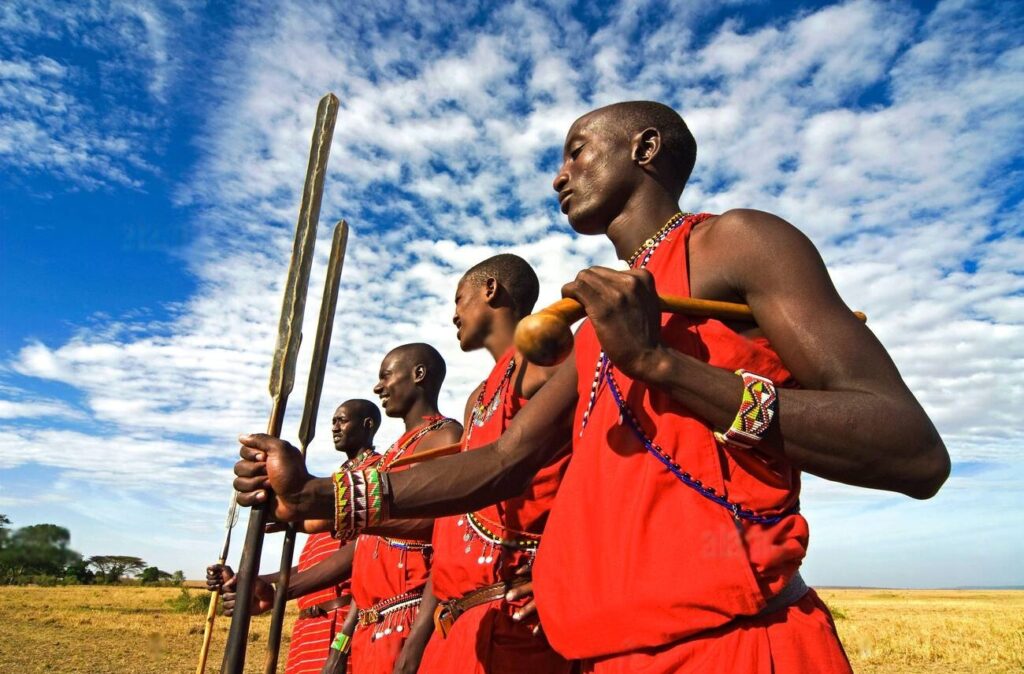
- Maasai: Perhaps Kenya’s most internationally recognized tribe, the Maasai are semi-nomadic pastoralists known for their distinctive red clothing, intricate beadwork, and warrior tradition. Many Maasai communities now welcome visitors to experience their way of life through cultural villages near major parks.
- Kikuyu: Kenya’s largest ethnic group, the Kikuyu are traditionally farmers who live in the fertile central highlands. Their agricultural prowess and entrepreneurial spirit have shaped much of Kenya’s development.
- Samburu: Cousins to the Maasai, the Samburu maintain many traditional practices in northern Kenya. Their elaborate beadwork and colorful attire reflect their artistic traditions.
- Swahili: Along the coast, the Swahili people represent a blend of African, Arab, and Persian influences that have intermingled over centuries of Indian Ocean trade.
- Luo: Living near Lake Victoria, the Luo have rich musical and storytelling traditions. Former President Barack Obama’s father came from this community.
Cultural Experiences Not to Miss
One of the things to know before going to Kenya is that genuine cultural interactions can be the highlight of your trip! Consider these experiences:
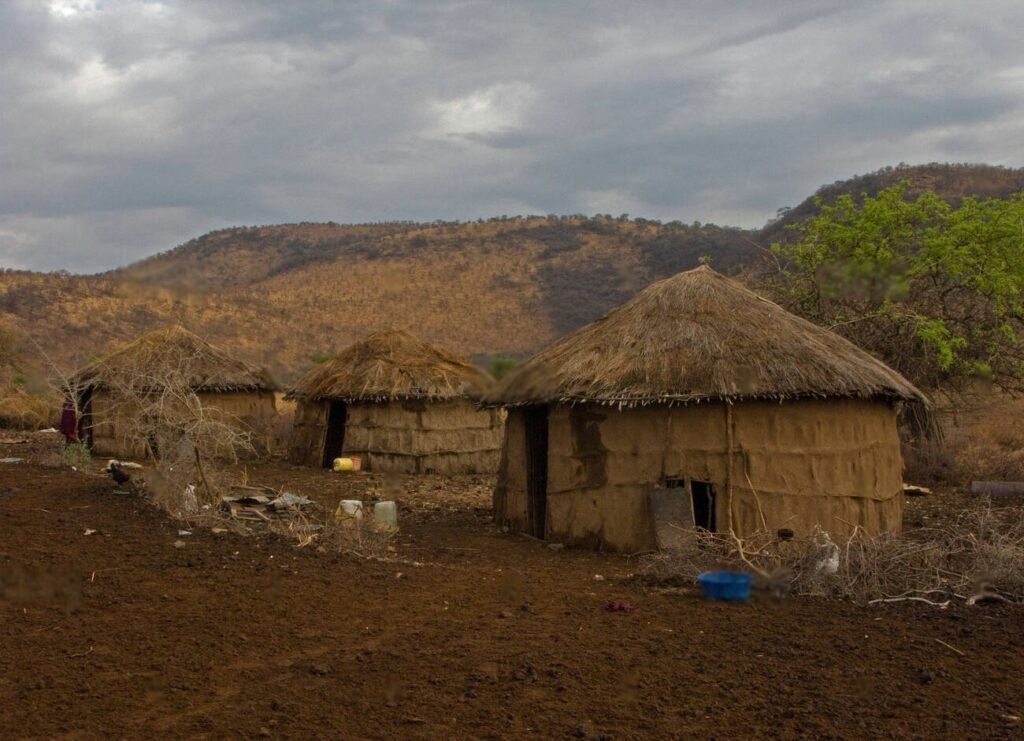
- Village Visits: Many communities offer cultural visits where you can learn about traditional building techniques, food preparation, and daily life. Choose programs that directly benefit local communities.
- Bomas of Kenya: This cultural center near Nairobi showcases traditional homesteads (bomas) from different Kenyan communities and hosts vibrant dance performances.
- Maasai Markets: These traveling artisan markets rotate through different locations in Nairobi and other cities. They’re perfect for finding handcrafted souvenirs while supporting local artisans.
- Lamu Festival: If you visit in November, the Lamu Cultural Festival celebrates Swahili culture with dhow races, donkey competitions, and traditional music.
Traditional Arts and Crafts
Kenya’s artistic traditions are vibrant and diverse:
- Beadwork: Maasai and Samburu beadwork is instantly recognizable, with different colors holding symbolic meanings. Beyond jewelry, look for intricately beaded belts, sandals, and home décor.
- Kanga and Kikoy Textiles: These colorful cotton fabrics serve both practical and cultural purposes. Kangas often feature Swahili proverbs along their borders.
- Wood Carving: The Akamba people are renowned for their wood carving skills, producing everything from wildlife figurines to elaborate masks.
- Kisii Soapstone: From the Kisii region, these soft stone carvings range from simple animal figures to complex chess sets.
Music and Dance
Rhythm is deeply embedded in Kenyan culture! Each community has distinctive musical styles and dances that tell stories, mark important life events, or simply celebrate together:
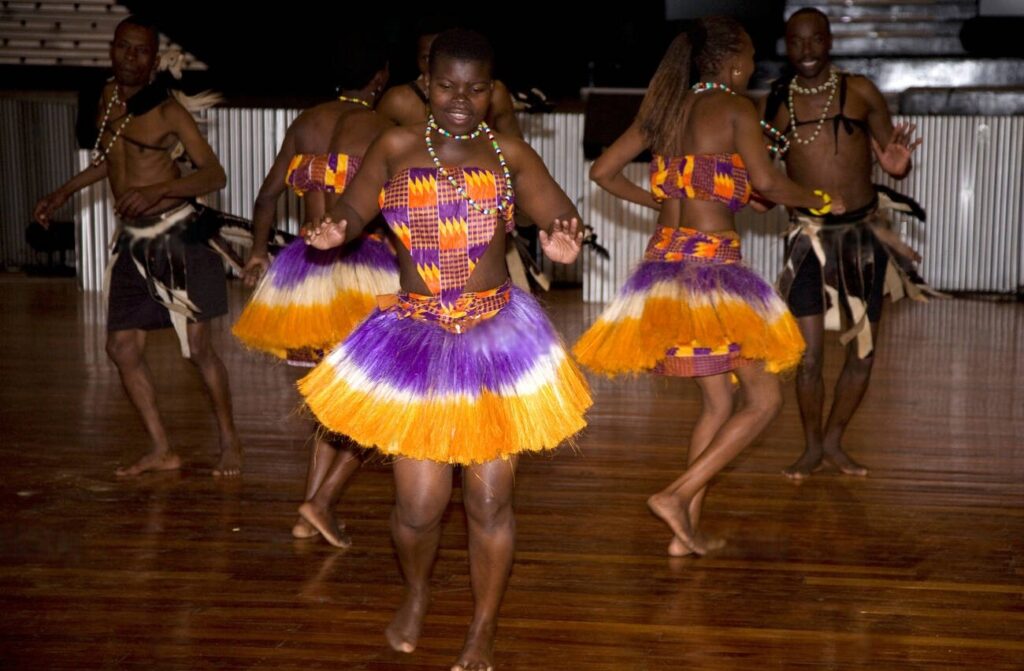
- The Maasai jumping dance (adumu) demonstrates warriors’ strength and endurance
- Coastal Taarab music blends African, Arabic, and Indian influences
- Benga music from western Kenya has influenced modern Kenyan pop
Many lodges arrange cultural performances, but seeking out authentic community events will give you a more genuine experience of Kenya’s vibrant performing arts.
This travel guide to Kenya encourages respectful cultural engagement. Always ask permission before taking photos of people, dress modestly when visiting communities, and be ready to learn rather than judge customs different from your own. These meaningful cultural interactions often become travelers’ most treasured memories of Kenya!
Kenyan Food to Try
Get ready for a culinary adventure! Kenyan cuisine reflects the country’s diverse cultural influences and abundant local ingredients. This Kenya travel guide section helps you navigate the delicious world of Kenyan food:
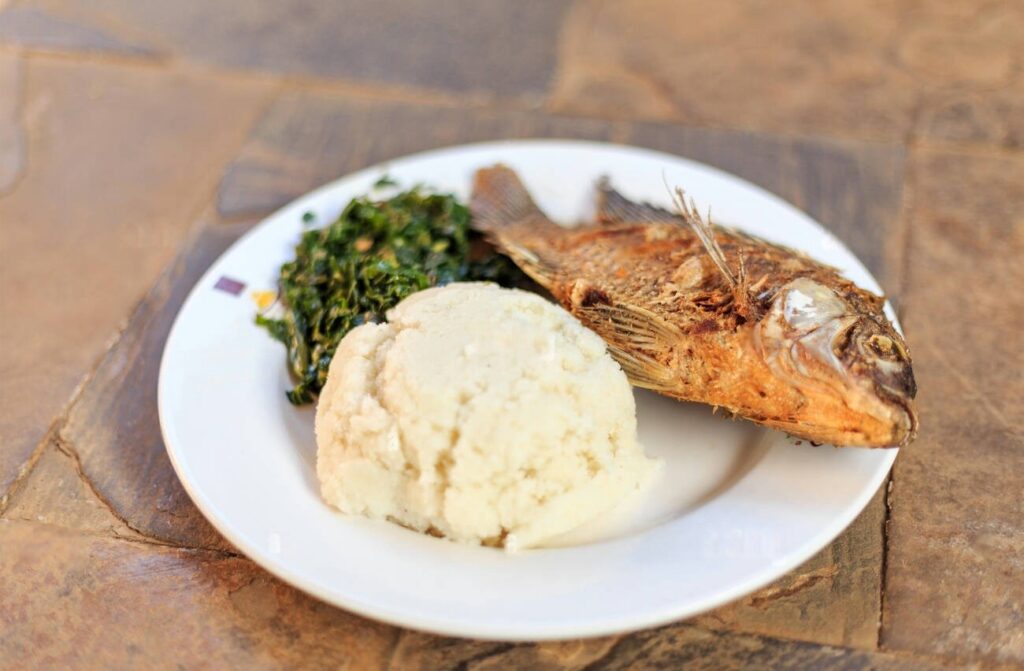
Staple Dishes
- Ugali: This maize meal porridge is Kenya’s ultimate comfort food, similar to polenta but firmer. Typically eaten with your hands, ugali serves as the perfect accompaniment to stews and vegetables.
- Nyama Choma: The king of Kenyan cuisine! This simply prepared grilled meat (usually goat or beef) is seasoned with salt and sometimes a touch of chile. It’s a social food, often enjoyed with friends alongside cold Tusker beers.
- Sukuma Wiki: Literally meaning “stretch the week,” this dish of sautéed collard greens or kale with onions, tomatoes, and spices is both nutritious and delicious. It’s a perfect example of Kenyan cooking’s ability to transform simple ingredients into something special.
- Irio: A Kikuyu specialty featuring mashed potatoes, peas, corn, and sometimes spinach, all mixed together. It’s hearty, satisfying, and often served alongside nyama choma.
- Pilau: This aromatic rice dish cooked with meat, vegetables, and a blend of spices (cardamom, cinnamon, cumin) reflects coastal Swahili influences.

Street Food Adventures
One of the fun things to know before going to Kenya is that some of the best food comes from street vendors and small mama mboga (vegetable seller) stalls:
- Mandazi: These triangular fried bread treats are slightly sweet and perfect for breakfast with a cup of chai.
- Mutura: For adventurous eaters, this Kenyan sausage made from meat mixed with blood and spices, then grilled over an open flame, is a flavorful street food delicacy.
- Mahindi Choma: Simply grilled or roasted corn on the cob, often brushed with lime juice and chile pepper, the perfect walking snack!
- Samosas: These triangular pastries filled with spiced meat or vegetables show Kenya’s Indian influences.

Fruits and Vegetables
Kenya’s varied climates produce incredible fresh produce:
- Tropical Fruits: Enjoy amazingly sweet pineapples, mangoes, passion fruits, and bananas that taste nothing like their exported versions.
- Tree Tomato (Tamarillo): This unusual fruit has a tart, complex flavor that’s delicious in juices.
- Avocados: Kenyan avocados are creamy, enormous, and ridiculously inexpensive!
Drinks to Sip
- Kenyan Tea (Chai): Kenya is one of the world’s top tea producers. The local version is typically prepared with milk and plenty of sugar strong and sweet!
- Tusker Beer: This iconic Kenyan lager pairs perfectly with nyama choma.
- Fresh Juices: Try passion fruit, mango, sugarcane, or the unique mix called “dawa” (medicine) that blends several fruits with honey and lemon.
- Coffee: Grown on the slopes of Mt. Kenya and in the highlands, Kenyan coffee is world-renowned for its bright, fruity acidity. Visit a coffee farm or enjoy a cup in Nairobi’s growing café scene.
Where to Eat
This travel guide to Kenya recommends trying food across different settings:
- Local “Hotels”: In Kenya, simple restaurants are called hotels and offer authentic, inexpensive meals. Don’t expect actual accommodation!
- Carnivore Restaurant: This famous Nairobi institution serves game meats on traditional Maasai swords until you surrender by lowering your table flag.
- Coastal Seafood: Along the coast, don’t miss fresh seafood prepared with Swahili spices.
- Markets: Visit municipal markets to sample fresh produce and local snacks while people-watching.
Remember that Kenyan food is meant to be shared! Communal eating is part of the experience, so don’t be surprised if you’re invited to join a family meal during your travels. This Kenya travel guide encourages trying at least one new food daily during your trip!
Travel Tips for First-Time Visitors
First time in Kenya? No worries! This essential section of our Kenya travel guide is packed with practical advice to help you navigate your adventure with confidence:
Planning Your Trip
- Visa Requirements: Most visitors need a visa to enter Kenya. The good news? Kenya has an efficient e-visa system. Apply online before your trip at evisa.go.ke. The standard tourist visa costs $50 for single entry.
- Travel Insurance: This isn’t just a suggestion it’s an absolute must! Ensure your policy covers medical evacuation, safari activities, and any adventure sports you plan to enjoy.
- Booking Timeline: For the best experience (especially during migration season), book accommodations and safari packages 6-12 months in advance. Last-minute travelers can still find options but might miss out on premier lodges.
- Duration: Aim for at least 10 days to experience both wildlife and cultural attractions without rushing. Two weeks is ideal for a more comprehensive Kenya travel experience.
Money Matters
- Currency: The Kenyan Shilling (KES) is the local currency. ATMs are widely available in cities and tourist areas, but always carry some cash for remote locations.
- Tipping Culture: Budget for tips! Safari guides typically receive $10-20 per day per couple, while camp staff appreciation pools run about $5-10 per guest per day.
- Payment Methods: Major hotels and upscale establishments accept credit cards, but always carry cash for markets, small restaurants, and emergencies.
- Bargaining: Haggling is expected at markets and with street vendors, but do so respectfully. Start around 50-60% of the initial price and negotiate with a smile!
Cultural Etiquette
One of the important things to know before going to Kenya is proper cultural etiquette:
- Greetings: Kenyans value polite greetings. Learn simple Swahili phrases like “Jambo” (hello) and “Asante” (thank you). Taking time to ask about someone’s day before getting down to business shows respect.
- Photography: Always ask permission before photographing people. Some tribes may request a small fee for photos.
- Dress Code: Kenya is generally conservative, especially in rural areas and coastal Muslim communities. Pack modest clothing that covers shoulders and knees, particularly for women.
- Public Behavior: Displays of affection should be minimal in public. Same-sex relationships are legally complicated in Kenya and discretion is advised.
Connectivity and Communication
- SIM Cards: Local SIM cards are inexpensive and provide good data coverage in most tourist areas. Safaricom offers the best network coverage across the country.
- Wi-Fi: Available in most accommodations but may be limited in bandwidth or hours of operation in remote areas.
- Useful Apps: Download Maps.me or Google Maps offline maps, Safari Telegram for wildlife sightings, and a basic Swahili phrasebook app.
Practical Hacks
This travel guide to Kenya wouldn’t be complete without some insider tips:
- Flight Scheduling: Book flights arriving during daylight hours, as navigating Nairobi after dark can be challenging for newcomers.
- Capital City Strategy: Plan to spend your first day in Nairobi rather than rushing straight to safaris. Visit the Sheldrick Elephant Orphanage, Giraffe Centre, and Nairobi National Museum to ease into your Kenyan experience.
- Jet Lag Management: If flying from North America or Europe, the best time to visit Kenya has an advantage, the time difference isn’t severe, making adjustment easier.
- Safari Attitude: Wildlife viewing requires patience! Some days deliver non-stop action while others might be quieter. Embrace the unpredictability.
- Pack Light: Many safari operators limit luggage to soft duffel bags under 15kg (33lbs) due to small aircraft restrictions. Check specifics with your tour company.
Remember that Kenyans are incredibly friendly and helpful people. Don’t hesitate to ask questions when you’re unsure. Your openness to the local way of doing things will significantly enhance your Kenya travel experience!
Transportation and Getting Around
Navigating Kenya efficiently is key to maximizing your adventure! This Kenya travel guide section breaks down your transportation options:
Getting to Kenya
- International Flights: Jomo Kenyatta International Airport (NBO) in Nairobi is Kenya’s main gateway, with direct connections to major global hubs. Moi International Airport in Mombasa serves the coastal region.
- Regional Connections: If you’re combining Kenya with other East African countries, multiple airlines offer short flights between capital cities.
Internal Flights
- Safari Air Services: Small aircraft operators like Safarilink and AirKenya connect major tourist destinations. These flights are not just practical; the low-altitude journeys offer spectacular aerial views of landscapes and wildlife!
- Benefits: Internal flights maximize your time by replacing long road journeys. Though pricier than ground transportation, the time saved can be worth every shilling, especially if your vacation days are limited.
- Luggage Restrictions: Strict weight limits (usually 15kg/33lbs in soft bags) apply on safari flights. Pack accordingly!
Road Travel
- Private Drivers: Most safari packages include a dedicated driver-guide with a specialized safari vehicle (typically a pop-top van or 4×4). This is the most comfortable and educational way to experience Kenya.
- Car Rentals: Self-driving is possible but challenging due to road conditions, navigation difficulties, and different driving customs. If you’re adventurous, consider renting a 4WD vehicle and perhaps hiring a local guide.
- Public Transportation: For budget travelers, Kenya has an extensive network of buses and matatus (minibuses). While inexpensive, they can be crowded and may not adhere to strict schedules. Major companies like Modern Coast offer more reliable intercity services.
In-City Transport
- Uber/Bolt: These ride-hailing apps work great in Nairobi and Mombasa, offering safe, convenient transportation with predetermined prices.
- Taxis: Available throughout tourist areas but always negotiate fares before entering.
- Tuk-tuks: These three-wheeled vehicles are perfect for short distances in coastal towns and some urban areas.
- Boda-bodas: Motorcycle taxis are ubiquitous and fast but come with safety concerns. If you choose this option, always ask for a helmet.
Unique Transport Experiences
- SGR Train: The Standard Gauge Railway connects Nairobi and Mombasa with comfortable modern trains. The journey cuts through Tsavo National Park, offering wildlife sightings from your window!
- Dhow Sailboats: Along the coast, these traditional wooden vessels provide atmospheric transport between islands and coastal villages.
- Ferry Services: Kenya Ferry Services operate essential links around Mombasa and to Lamu Island.
Transportation Tips
One of the things to know before going to Kenya is that travel times can be unpredictable:
- Distance vs. Time: In Kenya, GoogleMaps time estimates are often optimistic. Road conditions, unexpected wildlife crossings, or sudden downpours can extend journey times substantially.
- Nairobi Traffic: The capital’s legendary traffic jams require planning. Avoid road travel during rush hours (7-9am and 4-7pm) if possible.
- Rural Roads: Many safari destinations involve traveling on bumpy dirt tracks. Bring motion sickness remedies if you’re sensitive.
This travel guide to Kenya recommends arranging most transportation in advance, particularly during high season when flights and quality drivers book up quickly. The best time to visit Kenya often coincides with peak tourism, so securing transport early ensures smoother travels!
Where to Stay in Kenya
Kenya offers accommodations to suit every style and budget! This Kenya travel guide breaks down your options from luxury tented camps to city hotels:
Safari Accommodations
- Luxury Tented Camps: Don’t let the word “tent” fool you! These upscale accommodations offer canvas walls but often feature elegant furnishings, en-suite bathrooms with hot showers, and gourmet dining. They provide an authentic safari feeling while maintaining comfort.
- Safari Lodges: Built with permanent structures, lodges range from mid-range to ultra-luxurious. Many feature swimming pools, spa facilities, and expansive viewing decks. They tend to be larger than tented camps, sometimes accommodating 100+ guests.
- Mobile Camps: Following wildlife movements, these seasonal camps combine adventure with comfort. They’re particularly popular in the Masai Mara during migration season.
- Budget Camping: For adventurous travelers, basic camping offers affordable wildlife access. Options range from fully-serviced camping (where staff set up everything) to self-camping with your own gear.
City Accommodations
- Nairobi: Kenya’s capital offers international chain hotels, boutique properties, and budget options. Neighborhoods like Westlands, Kilimani, and Karen are popular with tourists, offering security and good amenities.
- Mombasa: The coastal hub features beach resorts north and south of the city, plus historic options in the Old Town.
Specialized Stays
- Beach Resorts: Along the coast from Diani to Lamu, beachfront resorts cater to post-safari relaxation with water sports, pools, and sea views.
- Community Homestays: For cultural immersion, homestay programs in villages offer authentic experiences while directly supporting local families.
- Conservation Lodges: Properties like Lewa Wildlife Conservancy and Ol Pejeta combine luxury with conservation, where your stay directly funds protection efforts.
- Tree Hotels: Channel your inner child with stays in elevated rooms overlooking waterholes where animals come to drink.
Accommodation Tips
One of the essential things to know before going to Kenya is that where you stay greatly impacts your experience:
- Location Matters: In national parks, accommodations near park gates save driving time, while centrally located options offer better game viewing but longer transit days.
- All-Inclusive vs. À La Carte: Most safari accommodations are all-inclusive (including activities and meals), while city and beach properties often charge separately for activities.
- Booking Windows: The best properties during peak season (aligned with the best time to visit Kenya for wildlife) book up 6-12 months in advance.
- Electricity Access: Even remote lodges typically offer charging stations for cameras and devices, though some limit generator hours.
- Connectivity: Wi-Fi availability varies dramatically, from high-speed connections in urban hotels to limited or non-existent service in wilderness areas. Many travelers appreciate the digital detox!
This travel guide to Kenya recommends mixing accommodation types throughout your journey. Perhaps start with a comfortable hotel in Nairobi, experience a wilderness tented camp during safaris, then finish with a beach resort. This combination provides a comprehensive taste of Kenyan hospitality!
Safety and Health Advice
Staying healthy and safe ensures your Kenya adventure remains incredible! This Kenya travel guide section provides essential health and safety information:
Health Preparations
- Vaccinations: Several vaccinations are recommended or required for Kenya. Yellow Fever vaccination is mandatory for entry if arriving from countries with yellow fever risk. Consult your travel clinic for personalized advice on Hepatitis A/B, Typhoid, and other recommended immunizations.
- Malaria Prevention: Kenya has malaria-risk areas, particularly at lower elevations and coastal regions. Consult your doctor about appropriate antimalarial medication. Regardless of medication, use insect repellent with DEET, wear long sleeves/pants in the evenings, and sleep under treated mosquito nets.
- Traveler’s Insurance: Comprehensive travel insurance with medical evacuation coverage is non-negotiable! Medical facilities in major cities are good, but rural areas have limited services. Air evacuation can be lifesaving but extremely expensive without insurance.
- First Aid Kit: Pack basic medications including pain relievers, anti-diarrheal medicine, antihistamines, motion sickness remedies, and any personal prescriptions. Band-aids, antibacterial ointment, and hand sanitizer are also essential.
Common Health Concerns
- Traveler’s Diarrhea: The most common ailment for visitors. Prevent it by drinking only bottled or properly treated water, avoiding raw vegetables and fruits you cannot peel yourself, and ensuring hot foods are thoroughly cooked.
- Sun Exposure: The equatorial sun is intense, even on cloudy days! Pack broad-spectrum sunscreen (SPF 30+), sunglasses, and a wide-brimmed hat.
- Altitude Issues: If visiting high-elevation areas like Mount Kenya, allow time to acclimatize to prevent altitude sickness.
- Wildlife Diseases: Follow your guide’s advice about wildlife interactions. Don’t pet unfamiliar animals due to rabies risk.
Safety Considerations
One of the important things to know before going to Kenya is that most tourist difficulties are preventable with common sense:
- Urban Safety: Like many major cities worldwide, Nairobi has areas with higher crime rates. Avoid walking alone at night, use reputable taxi services, and be discreet with valuables. The tourist areas and suburbs like Karen are generally safe during daytime.
- Rural Safety: Rural areas and small towns tend to have less crime. Nevertheless, maintain awareness of your surroundings.
- Wildlife Safety: Always follow your guide’s instructions around wildlife. Never approach animals on foot without a professional guide, keep arms inside vehicles, and maintain safe distances. Remember, these are wild animals!
- Road Safety: If self-driving, note that Kenya drives on the left. Road conditions vary dramatically, and local driving styles can be unpredictable. Night driving outside urban areas is not recommended due to poor lighting, wildlife crossings, and security concerns.
- Beach Safety: Coastal areas have strong currents in some locations. Heed warning flags and local advice about safe swimming areas.
Practical Safety Tips
This travel guide to Kenya recommends these safety practices:
- Local Communication: Program emergency contacts, your accommodation, and your country’s embassy into your phone.
- Document Protection: Keep digital and physical copies of important documents (passport, insurance, etc.). Use hotel safes when available.
- Money Safety: Distribute money between different locations (wallet, money belt, luggage) rather than carrying everything in one place.
- Group Travel: When possible, explore urban areas with companions rather than alone, especially after dark.
- Trust Your Guide: Safari guides and reputable tour operators prioritize your safety follow their advice!
The best time to visit Kenya often aligns with dry seasons when health risks like malaria can be lower due to fewer mosquitoes. However, with proper preparation, Kenya can be enjoyed safely year-round. Most travelers experience no significant problems and return home with only wonderful memories!
What to Pack for Kenya
Packing right makes your Kenya adventure smoother! This Kenya travel guide section helps you prepare the perfect suitcase:
Clothing Essentials
- Safari Neutrals: Pack lightweight clothes in neutral colors (khaki, olive, tan, brown) for safaris. Bright colors can distract wildlife, while dark colors attract tsetse flies. Avoid blue and black in tsetse fly areas.
- Layering Pieces: Mornings and evenings can be surprisingly cool, especially in highlands and during game drives. Bring lightweight long-sleeve shirts, a fleece jacket, and even a light waterproof jacket.
- Sun Protection: Include a wide-brimmed hat, sunglasses with UV protection, and perhaps a light scarf/bandana to protect your neck or use as a dust mask on dry safari roads.
- Modest Options: Pack some modest clothing (covering shoulders and knees) for visiting local communities, markets, and religious sites.
- Comfortable Footwear: Closed-toe shoes or light hiking boots are ideal for safaris and walks. Add flip-flops for showers and beach time.
- Swimming Gear: Essential for beach extensions and lodges with pools.
Safari Gear
- Binoculars: A good pair dramatically enhances wildlife viewing. 8×42 or 10×42 magnifications offer a good balance of detail and stability.
- Camera Equipment: Bring the best camera you own with the longest zoom lens you can manage (300mm+ ideal for wildlife). Don’t forget extra batteries, memory cards, cleaning supplies, and a small bag for protection.
- Daypack: A small backpack for carrying essentials during game drives and day excursions.
- Water Bottle: Reusable bottles reduce plastic waste. Many lodges provide filtered water for refills.
Health and Hygiene
- Personal First Aid Kit: Include prescription medications, pain relievers, anti-diarrheal medicine, motion sickness remedies, and basic first aid supplies.
- Sun Protection: Sunscreen (SPF 30+), after-sun lotion, and lip balm with SPF.
- Insect Protection: Insect repellent with DEET (at least 20%), insect bite relief cream, and a small bottle of hand sanitizer.
- Toiletries: Many lodges provide basics, but bring your personal essentials.
Tech and Documents
- Adapters: Kenya uses the British-type plug (three rectangular pins). Bring a universal adapter.
- Portable Power Bank: Essential for long safari days when charging opportunities are limited.
- Headlamp or Flashlight: Many safari camps have limited lighting on pathways after dark.
- Important Documents: Passport (with at least six months validity), visa documentation, travel insurance details, and vaccination certificates.
Nice-to-Haves
One of the fun things to know before going to Kenya is that a few specialty items can enhance your experience:
- Wildlife Guide: A compact field guide helps identify animals and birds.
- Travel Journal: Document your incredible experiences!
- Small Gifts: If visiting schools or communities, appropriate gifts include school supplies or sports equipment (check with your tour operator for current needs).
- Ziploc Bags: Versatile for organizing, protecting electronics from dust, and storing snacks.
Packing Tips
This travel guide to Kenya recommends these packing strategies:
- Safari Flight Limitations: If taking small aircraft between parks, luggage is strictly limited (typically 15kg/33lbs in soft-sided bags). Plan accordingly!
- Laundry Services: Most safari lodges offer same-day laundry service, allowing you to pack less. Note that some places don’t wash underwear for cultural reasons.
- Weather Research: Check seasonal conditions for your specific destinations and the best time to visit Kenya during your travel dates.
- Leave Space: Save room for souvenirs Kenya offers beautiful handicrafts worth bringing home!
Remember, you don’t need specialty safari clothing or gear to enjoy Kenya comfort, practicality, and layers are the key principles for a successful packing strategy!
Your Kenya Adventure Awaits!
This travel guide to Kenya has covered everything from wildlife adventures to cultural immersion, practical tips to culinary delights. Kenya truly offers something for every traveler whether you’re watching the Great Migration sweep across the Masai Mara, relaxing on pristine beaches, or connecting with warm-hearted locals.
The best time to visit Kenya depends on your specific interests, but with proper planning, any season can deliver unforgettable experiences. By understanding the essential things to know before going to Kenya, you’re already on your way to a smoother, more enjoyable adventure.
As you prepare for your journey, remember that Kenya’s magic lies not just in its postcard-perfect landscapes and remarkable wildlife but in the moments of connection with nature, with people, and perhaps even with yourself as you discover new perspectives.
So pack your sense of adventure along with your camera, embrace the spirit of “hakuna matata” (no worries), and get ready for the trip of a lifetime in magnificent Kenya!
Karibu Kenya! (Welcome to Kenya!)



